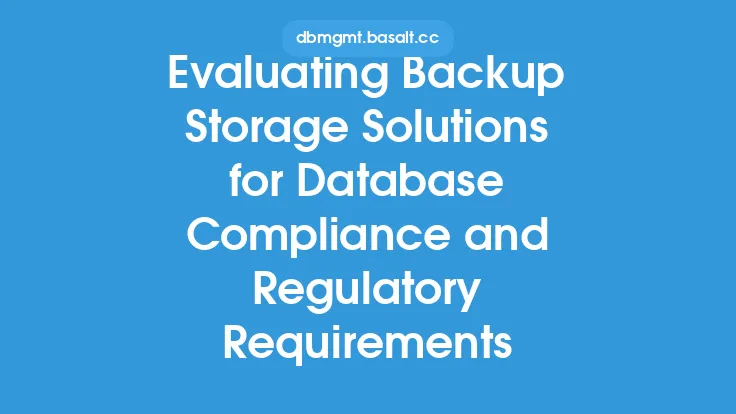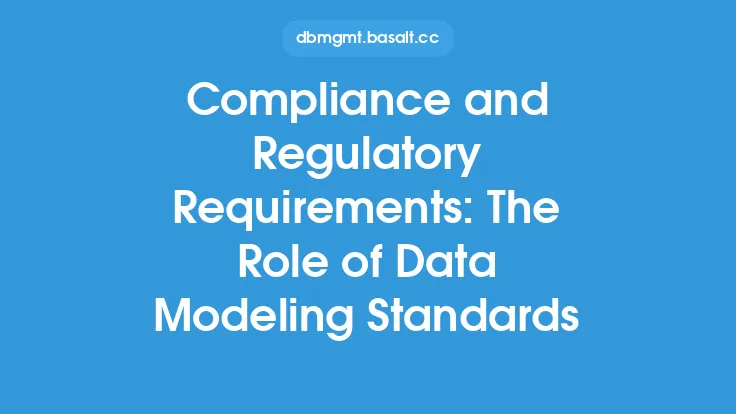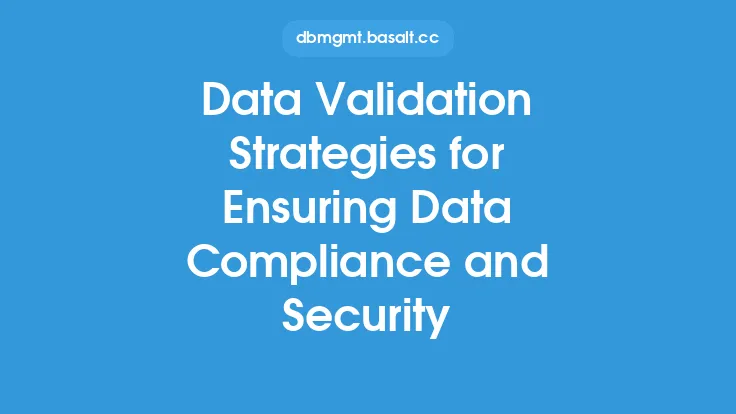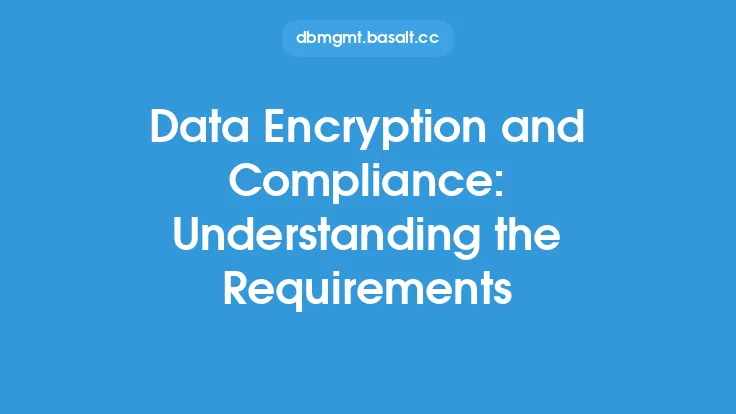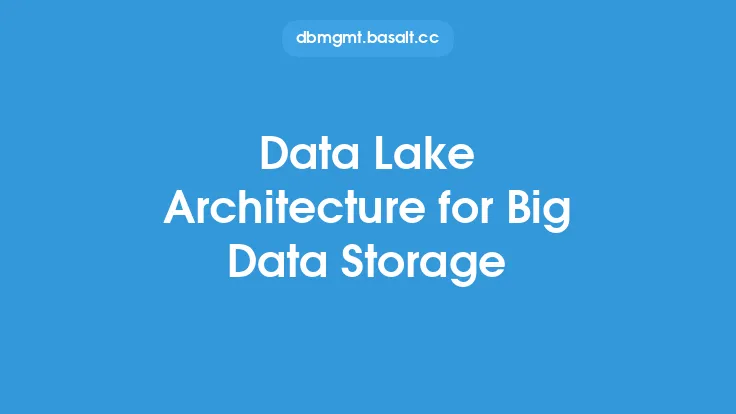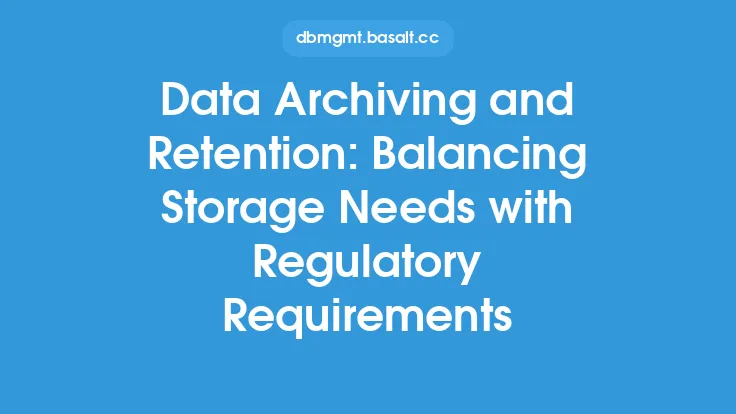Sensitive data storage is a critical aspect of database security, and compliance requirements play a vital role in ensuring the confidentiality, integrity, and availability of sensitive data. Organizations that handle sensitive data, such as financial information, personal identifiable information (PII), or protected health information (PHI), must comply with various regulations and standards to avoid legal and reputational consequences. In this article, we will delve into the compliance requirements for sensitive data storage, exploring the key regulations, standards, and best practices that organizations must follow.
Introduction to Sensitive Data Storage Compliance
Compliance requirements for sensitive data storage are designed to protect sensitive information from unauthorized access, theft, or damage. These requirements are typically outlined in regulations, standards, and guidelines that organizations must adhere to. The primary goal of compliance is to ensure that sensitive data is handled, stored, and transmitted securely, minimizing the risk of data breaches and cyber attacks. Organizations that fail to comply with sensitive data storage regulations may face significant fines, penalties, and reputational damage.
Key Regulations and Standards for Sensitive Data Storage
Several regulations and standards govern sensitive data storage, including:
- Payment Card Industry Data Security Standard (PCI DSS): Applies to organizations that handle credit card information, requiring them to implement robust security controls to protect cardholder data.
- Health Insurance Portability and Accountability Act (HIPAA): Regulates the handling of protected health information (PHI), requiring organizations to implement administrative, technical, and physical safeguards to protect PHI.
- General Data Protection Regulation (GDPR): Applies to organizations that handle personal data of EU residents, requiring them to implement robust security controls to protect personal data.
- Sarbanes-Oxley Act (SOX): Regulates financial reporting and requires organizations to implement internal controls to protect financial data.
- Federal Information Security Management Act (FISMA): Regulates the handling of federal information and requires organizations to implement robust security controls to protect federal data.
Data Encryption and Access Control
Data encryption and access control are critical components of sensitive data storage compliance. Organizations must implement robust encryption mechanisms to protect sensitive data both in transit and at rest. This includes using secure protocols, such as Transport Layer Security (TLS) or Secure Sockets Layer (SSL), to encrypt data in transit, and using encryption algorithms, such as Advanced Encryption Standard (AES), to encrypt data at rest. Additionally, organizations must implement access controls, such as role-based access control (RBAC) or attribute-based access control (ABAC), to restrict access to sensitive data to authorized personnel only.
Data Storage and Retention
Organizations must also comply with regulations and standards related to data storage and retention. This includes implementing secure data storage mechanisms, such as encrypted storage devices or secure cloud storage, and establishing data retention policies that dictate how long sensitive data is stored. Organizations must also ensure that sensitive data is properly disposed of when it is no longer needed, using secure data destruction methods, such as shredding or wiping.
Auditing and Monitoring
Auditing and monitoring are essential components of sensitive data storage compliance. Organizations must implement auditing and monitoring mechanisms to detect and respond to security incidents, such as data breaches or unauthorized access. This includes using logging and monitoring tools, such as security information and event management (SIEM) systems, to track access to sensitive data and detect suspicious activity.
Best Practices for Sensitive Data Storage Compliance
To ensure compliance with sensitive data storage regulations, organizations should follow best practices, including:
- Implementing a data classification policy to categorize sensitive data based on its sensitivity and risk.
- Conducting regular risk assessments to identify vulnerabilities and threats to sensitive data.
- Implementing robust security controls, such as firewalls, intrusion detection systems, and encryption mechanisms.
- Establishing incident response plans to respond to security incidents, such as data breaches or unauthorized access.
- Providing regular training and awareness programs to educate personnel on sensitive data storage compliance requirements.
Technical Requirements for Sensitive Data Storage
From a technical perspective, organizations must implement various security controls to protect sensitive data. This includes:
- Using secure protocols, such as HTTPS or SFTP, to encrypt data in transit.
- Implementing encryption algorithms, such as AES or RSA, to encrypt data at rest.
- Using secure storage devices, such as encrypted hard drives or solid-state drives, to store sensitive data.
- Implementing access controls, such as RBAC or ABAC, to restrict access to sensitive data.
- Using logging and monitoring tools, such as SIEM systems, to track access to sensitive data and detect suspicious activity.
Conclusion
Compliance requirements for sensitive data storage are critical to ensuring the confidentiality, integrity, and availability of sensitive data. Organizations must comply with various regulations and standards, including PCI DSS, HIPAA, GDPR, SOX, and FISMA, to avoid legal and reputational consequences. By implementing robust security controls, such as data encryption and access control, and following best practices, organizations can ensure compliance with sensitive data storage regulations and protect sensitive data from unauthorized access, theft, or damage.
